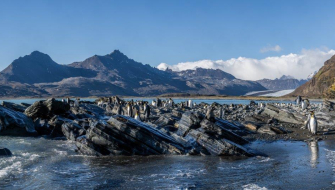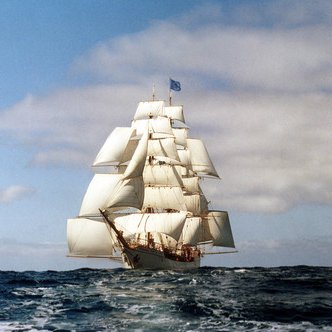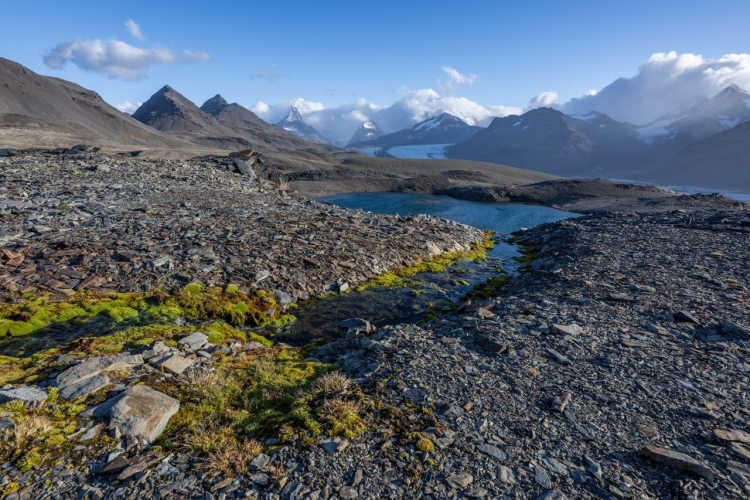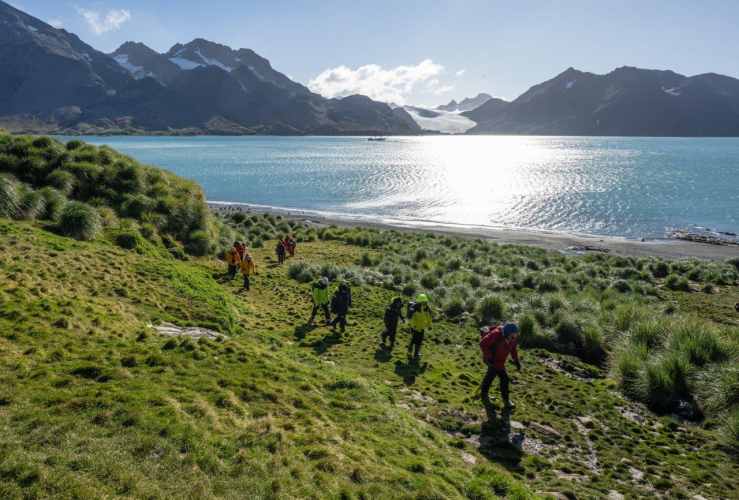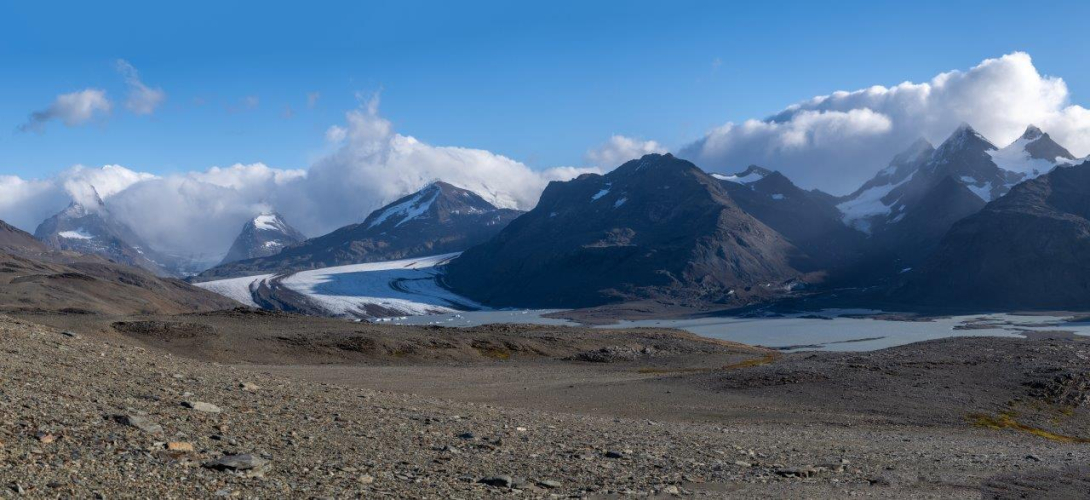South Georgia, Fortuna Bay
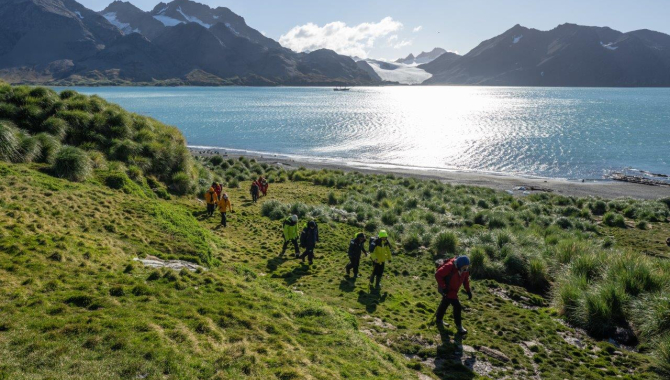
Whistle Cove and hiking from Fortuna to Stromness, the Shackleton hike.
It is our third day of our activities in South Georgia. Today, we visit a historically significant place, Fortuna Bay. Entered between Cape Best and Cape Robertson on the central north coast, Fortuna Bay is a 6 km long fjord leading to the heart of South Georgia's rugged interior. At its head we see the spectacular panorama of the island's alpine scenery. Here, on the western shores of the bay Shackleton and his two companions made their descent to the beach in Whistle Cove on the final leg of their crossing of South Georgia. The lower slopes of the surrounding mountains are covered by grass which higher up blends into rugged rocky cliffs towering high above the bay. Whistle Cove is the location of our morning landing. It seems impossible after first steps on the deck after breakfast where we are met with unusually strong wind gusts. The location where the ship anchored over the night happened to be just under the glacier and so the katabatic winds coming down from the glacier blew straight onto us. For the rest, the weather turned out to be fine and sunny, quite a rarity in South Georgia. Skies above our heads were blue, only clouds are observed way back in the distance, shrouding the alpine peaks into their domain.
Soon after breakfast and briefing, the zodiacs are launched and a trio of guides went off to scout the landing site. Due to the geographical nature of the bay and the winds, the ship remained on anchor quite far from the landing site. After guides radioed in the "go ahead", the shuttling started. After a while, all landing party was safely on the beach welcomed by usual suspects, king penguins and very curious seal pups. A handful of seal mothers keeping the pups at bay on alert. Not far from our landing site, at the foot of a small outcrop, is a sealers cave. Entrance covered with a dozen of tussock grass stools gave shelter to a giant petrel chick which we could see from a safe distance. Still, we got a good idea about the rudimentary shelter the cave provided for the sealers.
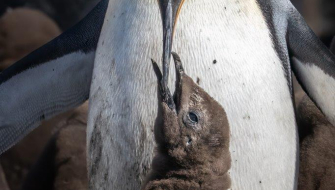
Next our walk continued alongside the beach and further inland on the flat and grassy plain, that led us closer to a relatively small… by South Georgia standards… King penguin colony. Numerous water streams cut through this landscape reflecting the rich blue colour of the sky. Even here, the abundance of wildlife gave us opportunities to enjoy and photograph them. We carefully threaded amongst numerous seal pups and females, king penguins, skuas and giant petrels. The lush green grass gave the place a fresh feel contrasting with the dark ground colour of the surrounding cliffs and mountains. Further in the distance, lies another glacier, source too of strong winds, now from a different direction than the wind blowing along the bay. Now and then, some of the gusts were so strong we had to brace ourselves to stay on our feet. From the grassy surface we stepped on glacier moraine and continued our loop towards the main penguin colony. An estimate of 15,000 breeding pairs sit there at the banks of small streams, bathing in the warm rays of the morning sun. Surprisingly, the skuas are almost missing from the picture, as they usually patrol the space above the colony trying to snatch eggs from the penguins. There are a number of chicks amongst the adults, hurled together in groups for better protection from the predators. A large number of adults though are tending their eggs. We spend quite some time there before we move on and return back to the beach where we landed about two hours earlier. Wind gusts forced us to change our location for our zodiac operations. Nothing we couldn't deal with and we all made it back to the ship before lunch to replenish our energy for the afternoon plan, the Shackleton hike across the mountains from here to Stromness.
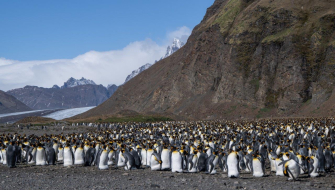
On starting the now popular Shackleton hike, we were a little wet and cold but certainly not miserable. The zodiac ride from EUROPA was more than a little gusty thanks to the katabatics shooting down to the sea from the many glaciers at Fortuna Bay.
We had had a fair share of adventure to get here, sailing the Drake, exploring the Antarctic Peninsula and delving as far into the Weddell as we dared before making our way across the Scotia Sea. Two historical expeditions were our sort of guidance through the area, The Swedish Antarctic Expedition 1902–1904 and the Endurance crew struggles, adventures and misadventures in 1914–16.
Now we stood literally on the footprints of no other than Sir Ernest Shackleton. It was not lost on us however, that we couldn’t begin to fathom the struggle those three men took to get to this point. Our hike ahead would be but a shadow compared to the trek through unmapped mountains, glacial landscapes and frigid waterfalls that lay before Shackleton, Crean and Worsley. Not to mention the ordeal that had led them to this point, and the weight of responsibility for the men awaiting rescue. An experience distant to that of our symbolic hike.
But we felt the presence of these historic heroes, legendary polar explorers and survivalists, as we started past the fur seals and tussock toward the scree ridges above.
This land has a depth of history that transcends human presence. The glacial valleys and moraines speak to millennia of earth and rock sculpting. A land where snowflakes individually lighter than feathers coalesce and form titans of ice, abrading the mountainsides to create deep valleys so bleak that only lichens and mosses grow, restricted to the banks of meltwater streams. The shale glitters with the building blocks of the planet. Iron reds and sandstones contrast cool sedimentary shales, rock formed by compaction of silt sediment, a symptom of the earth’s recycling over millennia.
Looking back across Fortuna Bay, we all saw echoes of fondly remembered places. The beauty of an international crew is that familiarity comes in such different flavours. From French Polynesia to the Lake District, Thailand to Switzerland, we all discussed the landscapes we love.
Onward to Crean Lake, we remembered with awe the story of exhaustion that Shackleton’s expedition had become. What had, on the 20th May, 1916, appeared to be a godsend—a clear, flat patch of snow to navigate to the saddle above Stromness—was today a large meltwater lake fed by picturesque streams and hollowed low into the shale. It is hard to understand how disheartening it must have been for Crean to break through the ice and plunge into bitter cold. The katabatic winds were weaker, by a margin, than at the base of the glacier, but still we were appreciative of the sunshine that had welcomed us to the bay.
We climbed still higher, reaching the pinnacle of our hike, the whaling station still out of view, the anxiety of Shackleton’s situation still high. This is where they heard the whistle. What was a signal for the watch change at Stromness Station, a bitter reminder for some and a temporary easing for others, came as a beacon of hope in the bleakest of situations for the three men on the mountain. They shook hands warmly, knowing that they were on the final stretch.
For us, this bit of the walk offered a magnificent view of the marshland below, petering back into tussock and shale before the familiar tides took over.
Our beautiful ship still out of sight of the bay, but one of the modern expedition cruise ships was there. Not a rare sight if we have in mind the increasing numbers of visitors the island is having.
We began our descent of the saddle. Unlike Shackleton, Worsley and Crean, the group wound our way down steep faces of scree. At the base of the valley, we looked back to the 15 m waterfall these men had descended on their last rope, both literally and metaphorically, and imagined the ice-encased landscape that closes in at winter.
Not long after, the three masts of the Europa come to sight around the corner, ready to pick us up as soon as we reach the coast, first making our way through the flat long valley. Soon we are all back aboard our capsule of sail history—much appreciative of the warm dinner and dry bunks that met us that evening.
